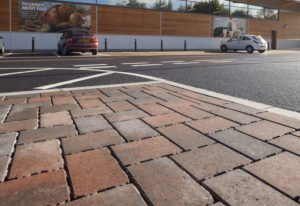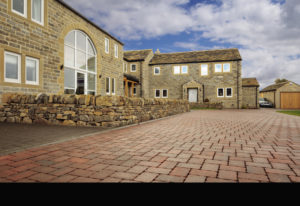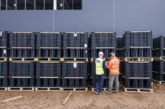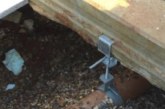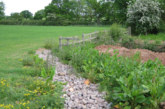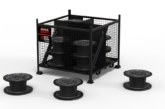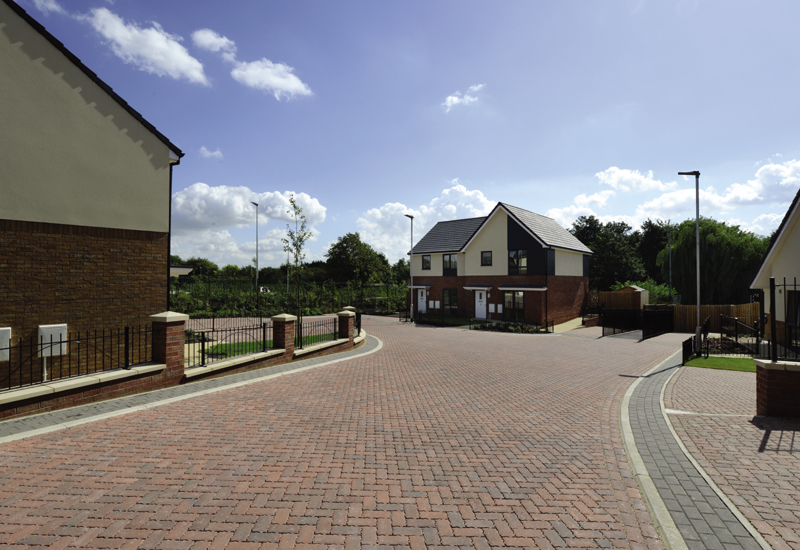
Mark MacIntosh-Watson, National Engineering Manager at Brett Landscaping looks the obstacles hindering a wider acceptance of sustainable drainage systems (SuDS) in the UK.
In recent years, local planning authorities have taken responsibility for implementing SuDS strategies. In April 2015 a written statement issued by The Secretary of State for Communities & Local Government regarding sustainable drainage systems, came into force. This stated that it is the government’s expectation that all housing developments of 10 houses or more and for major commercial developments, a SuDS solution should be included. Furthermore, many authorities require SuDS implementation as a planning condition for developments and projects that fall outside of these expectations regardless of size.
With a number of different SuDS solutions available, some in the construction industry have not fully engaged with the issue, citing cost and complexity as key barriers. In reality, creating a SuDS system is not an issue, as the skills and solutions needed are now readily available.
A new approach
Put simply, SuDS systems closely imitate the characteristics of a natural environment – with solutions focusing on how to manage surface water discharge, through a combination of reducing volumes (if not eliminating the volume) and managing attenuation (reducing the rate of flow) whilst enhancing the water’s quality. This is a marked change from traditionally designed impermeable footways and carriageways, which simply prioritised removing large volumes of water as quickly as possible by channelling it into a drainage system.
Adopting a new approach can leave some feeling uncomfortable as they adapt to a new and potentially unfamiliar systems after practicing traditional methods. For many, technical information and product advice is sufficient to allay fears that the system is difficult to use.
SuDS solutions can be divided into two distinct categories, ‘surface solutions and ‘underground’ ones. Both of these can either work in isolation or together as a part of an overall solution for a development-wide scheme.
‘Underground’ solutions provide unseen solutions for water attenuation and potentially infiltration. On the other hand ‘surface’ SuDS solutions, such as ponds and swales, are visible and often feature on individual projects.
Permeable paving is falls into both of these categories; it is a solution that is visible and useable as a hard-trafficable surface plus its ability to attenuate surface water within its sub-base and potentially infiltrating into the ground to eliminate any water from being discharged, makes it a highly versatile SuDS solution.
This dual function is particularly important in space-limited environments. This allows the pavement to capture water from its own area plus additional areas (e.g. roofs, adjacent impermeable surfaces, etc.) whilst also providing a functional pavement for pedestrians and vehicular traffic.
Although installation is different to a traditional non-permeable paving solution, installing a SuDS solution is not complicated. However, to be effective in real-world use, basic specification and installation decisions must be correct. Ensuring that structural performance and hydraulic designs are correct, is essential to the functioning of the system. To achieve this, specifying the correct sub-base material and depth is just as important as choosing the correct paving itself.
Permeable pavements typically consist of a geotextile laid onto the sub-grade; a sub-base of 4/20mm coarse graded aggregate followed by a laying course of 2/6mm coarse graded aggregate and then the permeable paving blocks.
The thickness of the sub-base depends on two considerations, the structural performance and the hydraulic performance. Each design produces a thickness of sub-base, with the greater of the two leading the design.
Structural performance requirements will depend on traffic loads expected during construction and final use. The correct coarse graded sub-base material specification is important for ensuring the structural integrity of the finished site. Any substituting of the specified aggregate material with alternatives should only be done after very careful consideration and assessment.
To understand the water capacity necessary for each specific SuDS solution, hydraulic design is necessary. This is dependent on rainfall data in the area for a 1:100 year storm event plus an allowance for climate change. In addition, other sources of water from adjacent impermeable areas, roofs, etc. may be added to the hydraulic design. This creates a possible solution of addressing water from other parts of the development through clever use of the permeable pavement. The sub-base can now be used to attenuate the water received, that is to store and eventually discharge the water, either infiltrating into the ground or slowly released from the sub-base in a controlled manner.
As with any construction project, careful construction planning ensures safe and functional results. This applies to SuDS as well. Thinking about the planning of the activities and ensuring the relevant trades understand the do’s and don’ts with any SuDS feature, just simple awareness can benefit greatly and avoid any unintended concerns. This can be something as simple as avoiding materials for other activities, such as sands, soils, etc. – being stored on top of a finished area of permeable paving, leading to localised clogged joints.
Increased risk of flooding
Whilst on the face of it SuDS may appear to be complex, it is a subject that will only increase in relevance during the coming years. As flooding becomes increasingly prevalent, it will no longer be acceptable to avoid the issue. We will all have to be open-minded about creating effective SuDS solutions. Whilst it is tempting to opt for non-permeable solutions, this will not be feasible in the long term, as flooding and water management become socially, economically and politically unavoidable topics.
Our advice is to consult technical experts and use online specification tools available from proven sources. This can help eliminate much of the hard work involved, and often provides the direction and guidance needed. It can be hugely beneficial to utilise the experience gained by others in correctly specifying SuDS solutions.
As a manufacturer of permeable paving and with a technical team offering solutions, Brett has the ability to help with such specifications and has produced PermCalc – a free online tool that generates precise design suggestions for the individual sites, but provides accurate costs. This allows different solutions to be modelled both technically and commercially.
For more information click here

